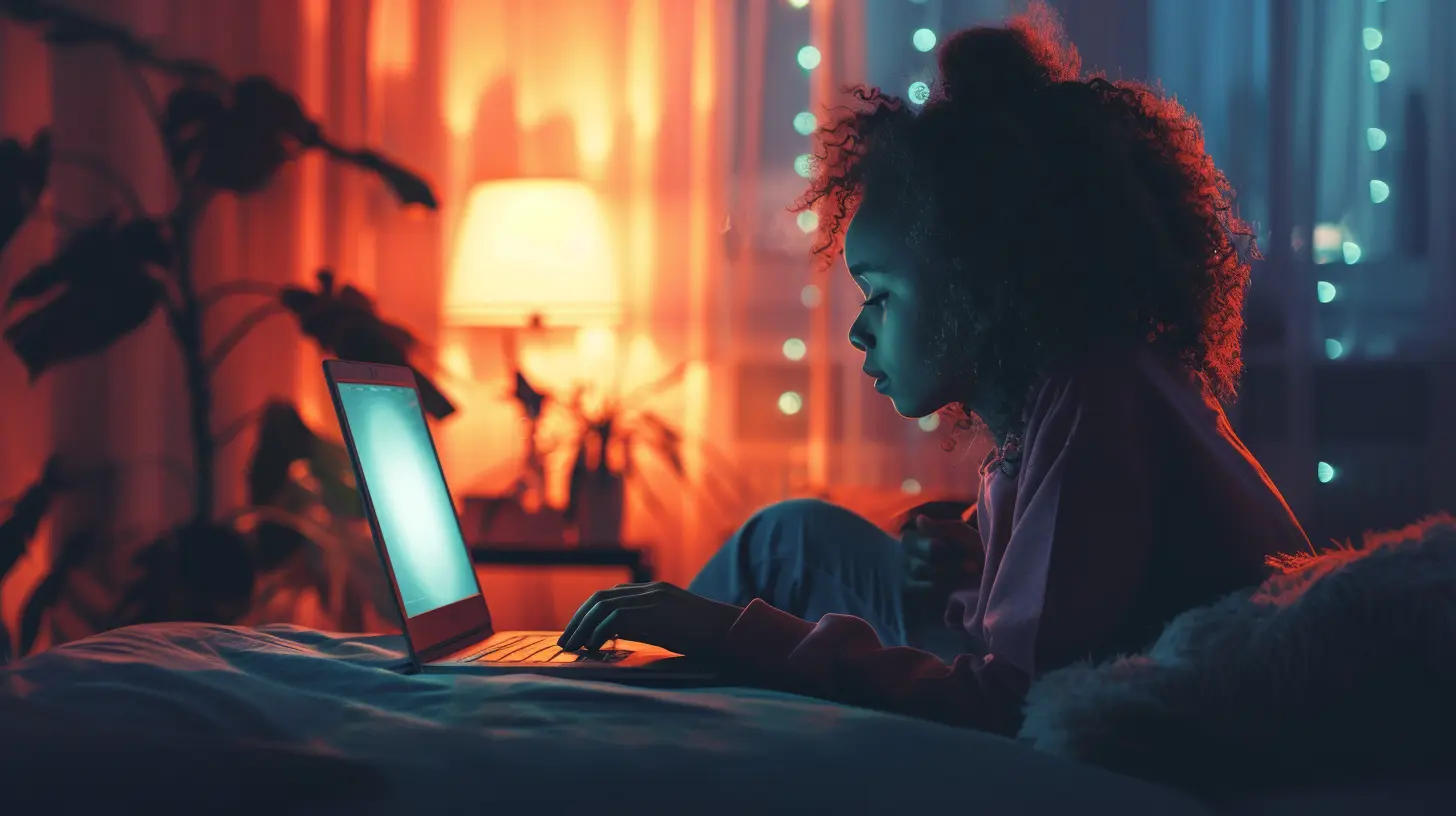Digital Detox: Helping Your Child Unplug and Reconnect
28 September 2025
Let’s be honest...our kids are glued to screens. Whether it’s watching cartoons on a tablet, playing games on a console, or endlessly scrolling through social media—they're plugged in. A lot. And honestly, we can’t blame them. Screens are colorful, fun, and downright addictive. But too much screen time? It’s not doing them any favors.
That’s where a digital detox comes in, and yep, it sounds scarier than it really is.

Why a Digital Detox Matters More Than Ever
Think back to your childhood—remember climbing trees, riding bikes, or building forts out of couch cushions? That kind of unstructured, screen-free time gave us space to imagine and play. Today’s kids? They're often more fluent in Minecraft than in making mud pies.Too much tech can mess with:
- Sleep – Blue light affects melatonin and makes it harder for kids to wind down.
- Focus – Constant notifications and multitasking hurt attention spans.
- Mood – Overexposure to social media? Hello, anxiety and self-esteem dips.
- Connection – Ever had to repeat yourself five times because your child’s zoned out watching YouTube?
A digital detox isn’t about banning technology—it’s about helping your child find a healthier balance. It's about reconnecting with themselves, the world around them, and yes, even with you.

Signs Your Child Might Need a Digital Detox
Okay, so how do you know if your kid is going overboard with screens? Here are some red flags:- Tantrums or meltdowns when you take the device away.
- Avoidance of social situations or outdoor play.
- Decreased interest in non-digital hobbies.
- Trouble sleeping or falling asleep later than usual.
- Slipping grades or lack of motivation at school.
If you're seeing more than a couple of these, it might be time for a screen break.

Start With a Reality Check
Before you freak out and pull the plug on all devices, take a step back—what’s your child’s current screen time like?Use screen-time tracking tools (many devices have them built-in now!) to get an honest baseline. You might be surprised. Two-hour video game sessions can stretch into five before you even notice.
Tip: Log screen time together for a week. Make it a shared activity rather than a punishment. That way, you both see the habits forming—and they’re more likely to own the problem too.

Set Realistic Goals, Not Extreme Rules
Let’s not go full “no-TV-until-you’re-18” here. That’s just asking for rebellion. Instead, start small and make changes gradually.Try these:
- Screen-free meals (no phones, TVs, or tablets at the table).
- Device-free bedrooms (especially at night!).
- One no-tech day or half-day a week.
- Set time limits for apps, games, or platforms.
The idea? Teach your child that screens aren’t bad—but they shouldn’t take over.
Get Involved—Don't Just Dictate
Here’s the thing: kids watch what we do more than they listen to what we say.If you’re glued to your phone during dinner, scrolling Instagram while talking to them, or binge-watching Netflix all weekend...they’ll do the same.
Lead by example:
- Put your phone away when talking to your child.
- Show that reading books, going for a walk, or cooking can be just as fun.
- Declare family "unplugged hours" and do something together—board games, baking, puzzles, or just being outside.
Kids learn balance when they see it modeled.
Reintroduce Old-School Fun
Remember building LEGO towers for hours? Or playing hopscotch until your legs gave out? Let’s bring that back.Offer alternatives that are actually fun:
- Art supplies for drawing and crafting.
- Sports, dance, martial arts, or any physical activity they enjoy.
- Books that match their interests (graphic novels are a great gateway!).
- Nature adventures—think hiking, stargazing, or even backyard camping.
Don’t just say "No screens today"—instead say, "Let’s try something different."
Make It a Family Habit, Not a Punishment
Nobody, especially kids, likes being told what they can’t do. A digital detox shouldn’t feel like punishment but more like a reset—even a challenge.Gamify it! Set family rewards for screen-free achievements, like:
- Screen-free weekends = a fun family trip.
- Reading challenge = new books or a night out.
- Limiting social media = extra allowance.
Turn it into a game, not a lecture.
Handle Pushback with Patience (and Humor)
Expect some resistance. Your child might say:- “This is so unfair!”
- “ALL my friends are online!”
- “I’m bored!”
That’s okay. Stay calm. Validate their feelings but stay firm. Explain why you’re doing this—not to punish them, but to help them create healthy habits.
And yes, being bored is actually a gift. Boredom fuels creativity. That’s when imagination kicks in. So when they groan about being bored, say, “Perfect! Let’s see what fun your brain can come up with now.”
Reinforce the Positives
After a few days, notice the changes:- Is your child sleeping better?
- Are they engaging more in conversations?
- Are they rediscovering hobbies they used to love?
Point these out. Celebrate the small wins.
The goal isn’t perfection—it’s progress.
Reintegrate Tech with Boundaries
Digital detoxes aren’t about going off-grid forever. Eventually, devices will come back in—but with more mindful use.Help your child think critically about their screen time:
- What apps actually make them happy?
- Which social platforms cause stress or comparison?
- What times of day are best for screens—and which are worst?
Teach them to use tech as a tool, not a crutch.
Bonus Tips for Younger vs. Older Kids
For Younger Kids (Ages 3–10):
- Use timers for screen time.- Pick age-appropriate shows/games.
- Read stories before bed instead of screen time.
- Involve them in chores and hands-on play.
For Tweens and Teens (Ages 11–17):
- Have open conversations about social media pressures.- Encourage offline plans with friends.
- Let them take the lead in planning tech-free days.
- Teach them digital responsibility, not just limits.
When to Seek Help
If your child is showing signs of anxiety, depression, or serious withdrawal when away from screens—don’t ignore it. You’re not alone, and they’re not “bad.” Screen addiction is real, and sometimes it needs more than a family meeting to fix.Talk to a pediatrician or child therapist familiar with digital behavior. There’s no shame in asking for backup.
Keep It Up: Make It a Lifestyle, Not a One-Time Event
Think of a digital detox like decluttering your home. It feels amazing at first, but if you don’t stay on top of it, things pile up again.Set regular “unplug” days or weekends.
Revisit screen-time rules every few months.
Check in with your child about how they’re feeling with their tech use.
It’s not a one-and-done thing—it’s an ongoing conversation.
Final Thoughts: Reconnect in a Disconnected World
Screens are part of our kids’ world—and that’s okay. But they shouldn’t overshadow everything else. A digital detox helps them hit pause, reset, and remember the joy of real-life connections.It’s not about being anti-tech. It’s about being pro-childhood.
So, take a breath, talk to your kid, and start with one small change today. You’ve got this.
And hey—maybe it wouldn’t hurt for us adults to unplug a bit, too.
all images in this post were generated using AI tools
Category:
Limiting Screen TimeAuthor:

Steven McLain
Discussion
rate this article
1 comments
Dax Gutierrez
Embrace the power of connection! A digital detox can rejuvenate your family bonds, spark creativity, and inspire meaningful conversations. Together, let’s create lasting memories beyond screens!
October 8, 2025 at 2:47 PM

Steven McLain
Absolutely! A digital detox can truly strengthen family ties and foster creativity—let’s prioritize those meaningful moments together!


